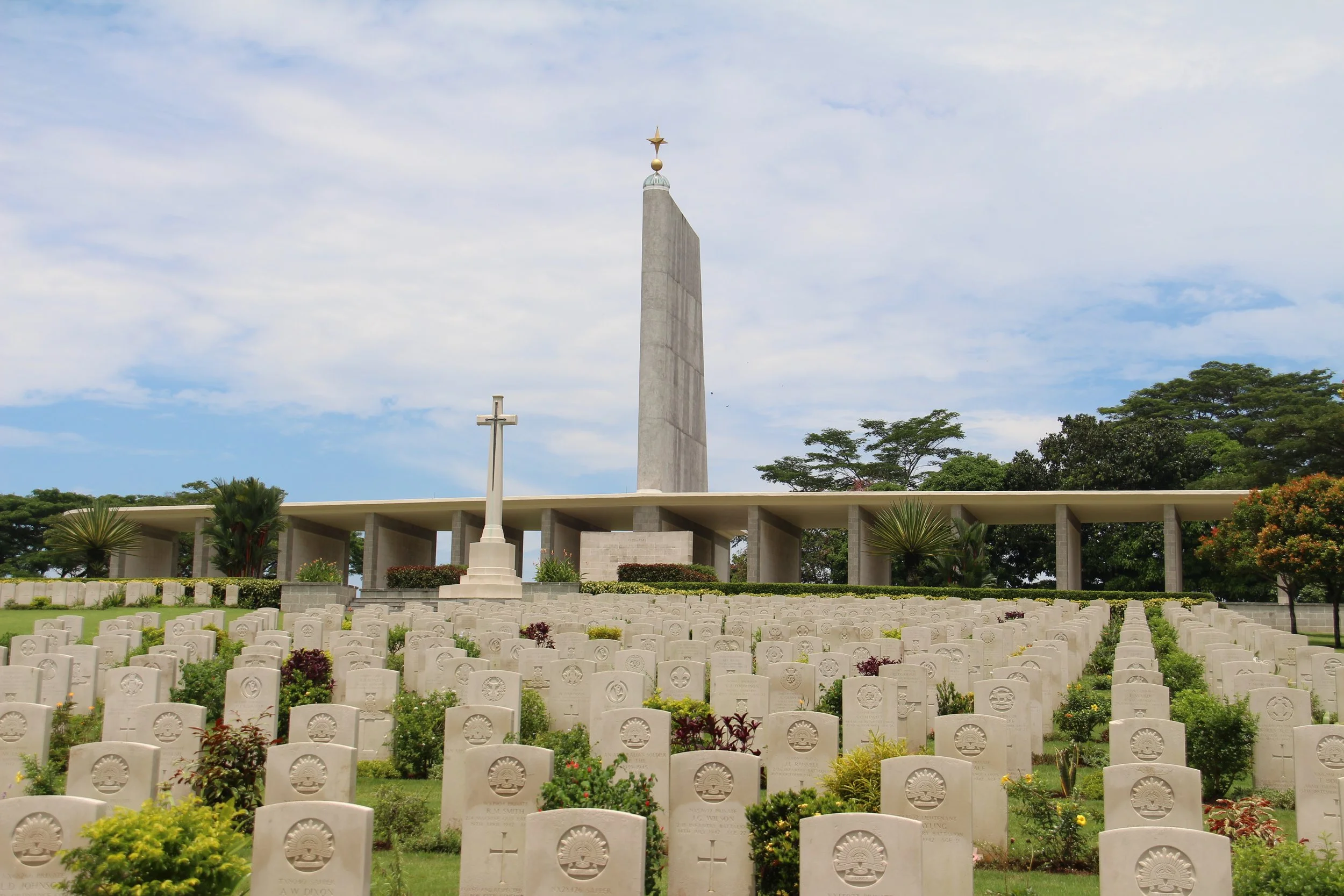The Traitor of Singapore
Kranji War Cemetery (looking towards the Singapore Memorial), Singapore
All cemeteries around the world, both civilian and military, contain a wealth of stories about the people who have been buried or honored there. The Kranji Memorial, the war cemetery at Singapore, is no different. The allied soldiers buried there and names of those who have no known grave and are recorded on the walls of the Singapore Memorial, all have their story. Some may have died in battle, some may have died because of the harsh treatment of the Japanese while in captivity and others may have died in more sensational circumstances.
School Photo
Generally, the stories are ones of courage, mateship and velour while making the ultimate sacrifice. However, there is occasionally an exception and the story of the Traitor of Singapore is one such exception.
Patrick Stanley Vaughan Heenan (circled) was born in New Zealand but was raised in England. He went to school at Cheltenham College where students were prepared for military careers. Heenan was a poor student but excelled in sports which should have made him popular with other students but didn’t. He was considered a bully and was regularly in trouble with the school authorities. He did not gain formal qualifications and hence was not accepted into the British Army for officer training.
After leaving school, Heenan worked for a trading company with interests in Asia. Then in 1932, he applied and was accepted into the British Army Reserve and in 1935, was commissioned as an officer.
He continued to alienate himself from other officers and consequently, found it difficult to be accepted into any British Regiment. He took leave and spent some time in Japan. (It is thought that during this time, he was recruited by the Japanese Secret Service.) Finally, he was sent to India to join the 16th Punjab Regiment of the British India Army.
Panel 263, Singapore Memorial
In 1941, as the threat of war with the Japanese loomed, the 16th Punjab Regiment became part of the 40,000 strong British Indian Army force sent to Singapore and Malaya (now Malaysia). Heenan, now a captain, was posted to northern Malaya as an air liaison officer. (Most of the allied fighter aircraft were stationed at air fields in and around the north eastern areas of Malaya.)
On the same day that the Japanese attacked Pearl Harbour, the Japanese invaded Malaya through southern Thailand and by landing forces on the north-eastern coast at Kota Bahru. Inland from Kota Bahru, were several allied airfields and with raid after raid by Japanese aircraft being unchallenged, these airfields and their aircraft were quickly destroyed leaving total air supremacy to the Japanese.
During the air raids, it was noticed that on each occasion, the Japanese had the correct challenge code which allowed them to fly unopposed to their target. (The challenge code was changed daily and required incoming aircraft to give that code in response to a request or challenge by the allied ground control. If the challenge code was not given or was incorrect it was automatically assumed that the incoming aircraft would be hostile.) During an air raid, Heenan was noticed to be missing and after a search was found with a Japanese radio transmitter in his possession still warm. He was arrested and sent to Singapore to be court-martialed on the charge of spying for the Japanese. In January 1942, Heenan was found guilty of treason and espionage and sentenced to death. No date was set for his execution to take place, pending appeals.
The defense of Malaya and then Singapore proceeded to go badly for the Allies. On the 13th February, with the knowledge of the Japanese being close at hand, Heenan foolishly taunted the prison warders incessantly with comments like “soon Singapore will fall and I will be free - it will be your turn to be behind bars”.
In what can only be described as an extraordinary turn of events, the following day, just a day before the Allies surrendered to the Japanese, Heenan’s guards decided to take matters into their own hands. They drew cards for the ‘honour’ of carrying out his execution. Late that afternoon, Heenan was taken from Outram Road Goal on the short drive to the edge of Singapore Harbour. As he looked in the direction of the setting sun and with the words “that will be the last sunset you will ever see”, his executioner shot him and his body was thrown into the harbour.
Panel Location
It is generally felt that Heenan’s actions in Northern Malaya would have had little effect on the air war that took place there. The Japanese had modern, highly maneuverable fighter aircraft compared to the allies outdated models. However, as word of Heenan’s actions spread quickly, it had a greater effect on the morale of the allies.
Most of the official records of Heenan’s court martial and his subsequent execution were lost during the Japanese occupation of Singapore. It wasn’t until 50 years later that this story came to light. Today, Heenan’s name (Panel 263) appears amongst approximately 24,000 heros, on the walls of the Singapore Memorial.




